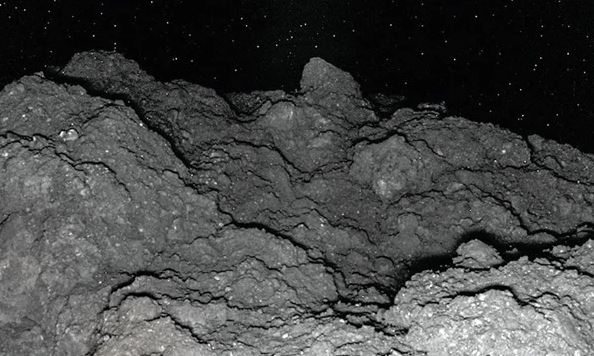Scientists make embarrassing discovery on asteroid sample they thought had signs of alien life
The possibility of discovering evidence of extraterrestrial life in the universe has once again been dashed.
And this time on the space rock Ryugu, an asteroid that orbits between Mars and Earth.
The samples were recovered from Ryugu in 2019 by the Japanese Space Agency’s (JAXA) Hayabusa2 probe.
Stunned scientists discovered two chemical molecules necessary for life in samples of the far-off asteroid last year.
The finding bolstered the hypothesis that asteroids and meteors, which are space rocks, might harbor seeds of extraterrestrial life that could colonize the cosmos.
However, a group of scientists headed by Imperial College London’s Matthew Genge have since disproved that notion, at least with regard to the asteroid Ryugu.
READ MORE ON SPACE
The samples did include indications of microbial life, but it was not from an unidentified alien species, according to a recent study published in the journal Metaphortics & Planetary Science.
Instead, the microbes came from a much closer place: Earth.
The results show that human microorganisms—tiny, microscopic organisms like bacteria, fungus, and viruses—contaminated the samples.
The human body is home to trillions of microorganisms that aid in food digestion and even infection prevention.
These microbes have been dubbed the “world’s greatest colonizers” because to their capacity to proliferate under the strictest controls.
Nasa finally opens mysterious sample from Bennu ‘doomsday asteroid’ after battling lid for two months
“The presence of terrestrial microorganism within a sample of Ryugu underlines that microorganisms are the world’s greatest colonisers and adept at circumventing contamination controls,” the abstract states.
“The presence of microorganisms within space-returned samples, even those subject to stringent contamination controls is, therefore, not necessarily evidence of an extraterrestrial origin.”
As NASA lovingly referred to the samples, the “box of treasure” was shipped in hermetically sealed containers and unlocked in sterile, nitrogen-filled laboratories.
Sterilized instruments were used to pick each particle, and they were kept in airtight containers under nitrogen.
“The discovery emphasizes that terrestrial biota can rapidly colonize extraterrestrial specimens even given contamination control precautions,” the researchers said.
Earth-based microbes might even find an unexplored breeding ground in space samples.
What’s the difference between an asteroid, meteor and comet?
What NASA says you should know is as follows…
- Asteroid: An asteroid is a small rocky body that orbits the Sun. Most are found in the asteroid belt (between Mars and Jupiter) but they can be found anywhere (including in a path that can impact Earth)
- Meteoroid: When two asteroids hit each other, the small chunks that break off are called meteoroids
- Meteor: If a meteoroid enters the Earth s atmosphere, it begins to vapourise and then becomes a meteor. On Earth, it ll look like a streak of light in the sky, because the rock is burning up
- Meteorite: If a meteoroid doesn t vapourise completely and survives the trip through Earth s atmosphere, it can land on the Earth. At that point, it becomes a meteorite
- Comet: Like asteroids, a comet orbits the Sun. However rather than being made mostly of rock, a comet contains lots of ice and gas, which can result in amazing tails forming behind them (thanks to the ice and dust vaporizing)
The samples were delivered to Earth by the Hayabusa2 spacecraft in December 2020, having been gathered in February 2019.
In July 2021, the stony grains were taken out of Japan, and later that year, they were examined at NASA’s Goddard Space Flight Center.
The international soluble organic analysis team was given a small sample (30 mg, or around 0.001 ounce).
According to NASA, the material was extracted like tea in a variety of solvents in Japan and examined in labs in Goddard, Europe, and Japan.
Along with asteroid Bennu debris gathered by NASA’s OSIRIS-REx mission, the Ryugu samples will be analyzed for years.
Read More on The US Sun
Bennu was a near-Earth asteroid believed to have originated during the first 10 million years of the solar system, and it was the focus of the 2016 OSIRIS-REx mission.
After some difficulty accessing the container in which they were kept, the Bennu samples were finally opened in January 2024 after being returned to Earth in 2023.
Note: Every piece of content is rigorously reviewed by our team of experienced writers and editors to ensure its accuracy. Our writers use credible sources and adhere to strict fact-checking protocols to verify all claims and data before publication. If an error is identified, we promptly correct it and strive for transparency in all updates, feel free to reach out to us via email. We appreciate your trust and support!















